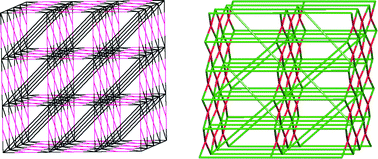Two metal–organic frameworks with unique high-connected binodal network topologies: synthesis, structures, and catalytic properties†
Abstract
{[Cd3(btec)(btx)0.5(μ3-OH)(H2O)]·H2O}n (1) and [Cu2(btec)(btx)1.5]n (2), two novel cadmium(II) and copper(II)-based high-connected metal–organic frameworks, with both 1,2,4,5-benzenetetracarboxylate (btec) and 1,4-bis(1,2,4-triazol-1-ylmethyl)benzene (btx) as mixed


 Please wait while we load your content...
Please wait while we load your content...